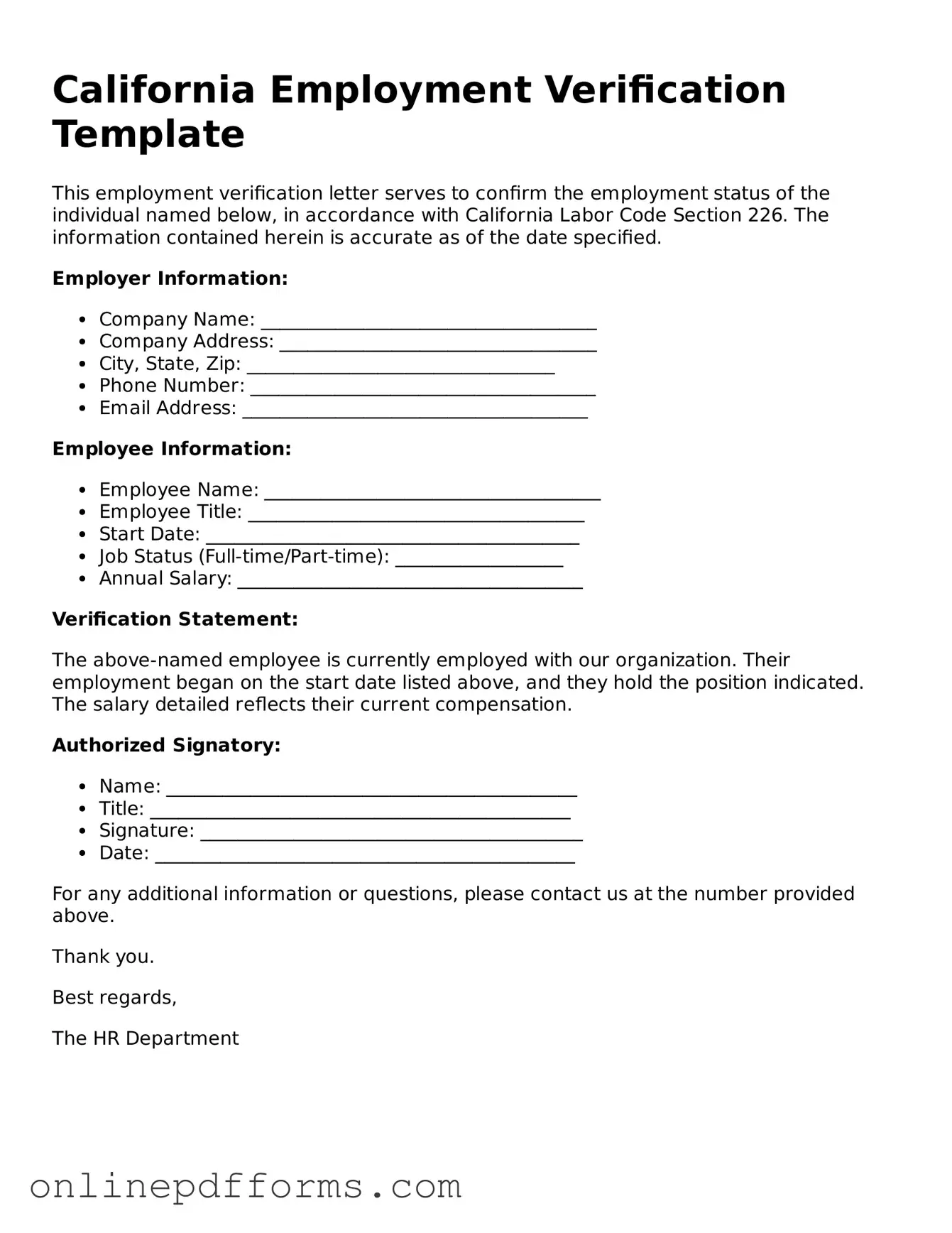The I-9 Form, officially known as the Employment Eligibility Verification form, is a crucial document for employers in the United States. Like the California Employment Verification form, the I-9 is used to confirm an employee's identity and eligibility to work in the country. Both forms require the employee to provide personal information, including their name, address, and Social Security number. Additionally, the I-9 mandates the presentation of specific identification documents, ensuring that employers comply with federal regulations regarding employment eligibility.
The W-4 Form, or Employee's Withholding Certificate, serves a different purpose but shares similarities in its role within the employment process. While the California Employment Verification form focuses on confirming eligibility, the W-4 helps employers determine the correct amount of federal income tax to withhold from an employee's paycheck. Both forms require employees to provide personal information, and they must be completed upon hiring to ensure accurate payroll processing.
The California New Hire Reporting Form is another document that aligns with the California Employment Verification form in the context of employment. This form is used to report newly hired employees to the state’s Employment Development Department. Similar to the Employment Verification form, it collects essential information such as the employee's name, address, and Social Security number. This reporting helps the state track employment for child support enforcement and other purposes.
The Form 1099-MISC is utilized for reporting income earned by independent contractors and freelancers. While it serves a different audience than the California Employment Verification form, both documents are essential for tax purposes. The 1099-MISC requires details about the recipient's identity and the income earned, similar to how the Employment Verification form confirms an employee's identity and eligibility for work.
The California Wage Theft Prevention Act Notice is a document that informs employees of their rights regarding wages and working conditions. Although its primary purpose differs from that of the California Employment Verification form, both documents are essential in the hiring process. The notice provides employees with information about their pay rates, work hours, and other employment details, ensuring transparency and compliance with state laws.
The Job Offer Letter is a formal document that outlines the terms of employment, including job title, salary, and benefits. While the California Employment Verification form is focused on confirming eligibility, the Job Offer Letter is a critical step in the hiring process. Both documents require clear communication of important information to ensure that both the employer and employee are on the same page regarding employment expectations.
The Employee Handbook serves as a comprehensive guide to company policies and procedures. While it does not directly verify employment eligibility like the California Employment Verification form, it plays a vital role in the onboarding process. Both documents help establish a clear understanding of the employer-employee relationship, with the handbook outlining workplace expectations and the Employment Verification form confirming the employee's right to work.
The Offer of Employment form is another document that, like the California Employment Verification form, is part of the hiring process. This form details the job position, salary, and start date, ensuring that the employee understands their new role. While it does not serve the same verification purpose, both documents are essential for formalizing the employment relationship and ensuring that both parties agree to the terms of employment.
Finally, the Direct Deposit Authorization form allows employees to set up direct deposit for their paychecks. While this document is more administrative in nature, it complements the California Employment Verification form by streamlining the payroll process. Both forms require accurate personal information to ensure that employees receive their compensation promptly and correctly, reflecting the importance of clear communication and documentation in the workplace.
